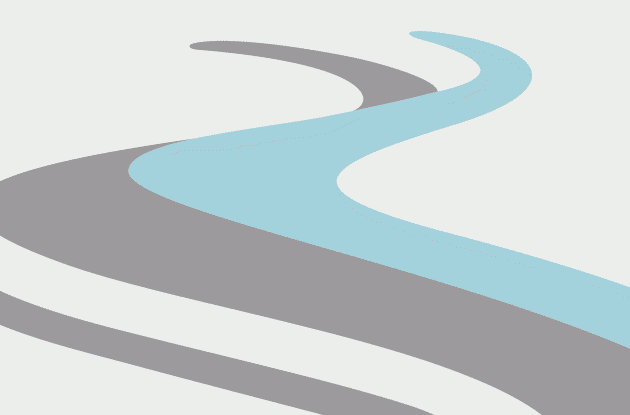Getting Back on the Iron Horse
Learn how to stay motivated after a crash.
The problem is that you can be wounded in your mind as well as your physique.
Marco Pantani.
Falling down is an inherent risk associated with the joy of riding. Sketchy packs, slippery road lines, suicidal squirrels, and gravity black holes all interfere with our best efforts to keep the rubber side down. While crashes give us bragging rights and fantastic footage, they can also result in road rash, broken things (both bike and people), and battle scars. Worse yet crashing can have lingering mental consequences that can interfere with your ability to ride well and even your ability to get back on the bike at all. Further, the amount of carnage to body and bike are not necessarily related to the impact the experience can have on your mental ability to ride with the intensity and confidence necessary to succeed. Even when you manage to remain upright in the chaos of a crash, witnessing other riders getting hurt or imagining what could have happened can leave you with nightmares and have a negative impact on your ability to ride.
Amazing and dread inspiring crashes like Rebecca Twigg's high speed velodrome collision a week prior to the 1996 Olympic Games, Johnny Waddell's downhill fall that resulted in a week long coma, and more recently the horrible impact of ONCE rider Joseba Beloki in the 9th stage of this years Tour de France leave us wondering whether they can physically recover from their wounds let alone get back on the bike and compete with the same intensity. Some seem to be able to get back on the bike as if nothing happened, while others are never able to regain the fine edge of speed and nerves necessary for hairpin turns, tight packs, or knarly descents again. Crashing impacts different riders in different ways. The ability to overcome the trauma of a serious crash come more easily to some than to others, but the skills necessary to recovery can be practiced and utilized successfully by athletes of all levels and abilities. Knowing how to cope with crashing and how to manage the fear of crashing again will improve your confidence, handling skills, and even your performance. Moreover, confident riders react better in stressful situations and are less likely to make the mistakes or inappropriate reactions that lead to many crashes.
The Aftermath
The first thing to do after a crash comes naturally to most riders. You assess the damages. Blood? Broken bones? Bike ok? Many riders actually assess bike damage before they even turn their attention to themselves! Cyclists know that road rash needs to be scrubbed and that Neosporin and gauze are usually in order. For more serious wounds, a trip to the medical tent or the local ER may be necessary. We treat our equipment equally well after a crash. Helmets, frames, wheels, and forks are carefully inspected. We may even seek the outside expertise of a trusted mechanic. Unfortunately, physical and equipment damage are only part of the potential aftermath of a fall. Many riders are reluctant to acknowledge the psychological aftermath of a crash, let alone talk about it with anyone else. Acknowledging that a crash has affected you and seeking the appropriate tools to repair the damage is as important as replacing a cracked helmet or getting a broken bone set.
So, what do you do to put a bad spill behind you? First, you need to acknowledge and understand what happened. Trying to pretend a crash didn't happen, particularly once in which someone got seriously hurt will leave the memory lurking in the back of your mind where it will overshadow future riding. Examine what happened in the crash. Some crashes happen in the blink of an eye, while others seem to unfold slowly. No matter how you went down, the most important thing is to understanding why you went down. This will help you determine what you can do to avoid a future fall.
Falling (or not falling) is not always within our control. If the fall was truly out of your control, acknowledge this important fact. Sometimes crashes happen and you need to decide if you can focus on your efforts on accepting it as part of the sport and move forward. However, if you contributed at all to the downfall, it is very important that you understand and accept the role you played. Don't beat yourself up about it though, instead focus your energies on looking for ways you can improve your riding to prevent a repeat. Overall, understanding what happened and developing a plan to move beyond the crash will help you begin to repair your riding confidence.
When reviewing a crash and attempting to learn from it you should also enlist the help of a trusted teammate or fellow rider. Another person can often provide an outside opinion and fresh insights about what happened. Often athletes can be pretty blind to things and they may either completely blame themselves for something they had no control over or they may be unaware of how their own actions contributed to the problem. Either way, seeing the situation from a different perspective can help you more correctly identify what happened so that you can properly decide what skills you need to work on in order to avoid future scrapes. Further, discussing fears and concerns with others around you whom you trust can help normalize the experience and can help you see that others have been through it and have been able to recover.
After a crash it is very important to get back on the bike asap. The longer you are off the bike the more time your imagination has to get all worked up and the harder it can be to regain the trust and confidence you had on the bike before. If the physical damage from the crash keeps you off the bike for more than just a few days, you can use imagery to put yourself back in the saddle and minimize loss of mental ride time. Imagery should be done in a realistic controlled first person style. This means that when you use imagery you want to be riding rather than watching yourself ride. Make your images as clear and detailed as possible. Keep your mental rides in real time and riding situations and always remain in control over what is happening. Finally, for effective imagery practice, concentrate on riding strong, smooth, and safely in a variety of situations, including those similar to those that lead to the crash.
Remember that overcoming a crash that got into your head wouldn't happen overnight. It is important to be patient and recognize that it will take time and conscious effort. Just like a knotted muscle or stiff joint, the "mental knot" that blocks your ability to regain your pre crash edge will take time to work out. Relaxation techniques can be a useful tool both on and off the bike in helping release this knot and enhance your recovery. Off the bike practicing relaxation can help control and reduce pre-race or pre-ride anxiety. On the bike relaxation can help quickly reduce your anxiety levels when you encounter a situation that makes you nervous or tense (both things that will increase your likelihood of crashing). Both techniques require repeated practice in order to be effective.
As mentioned before, you should use what you learn from crash experiences to help identify physical skills and riding techniques that you need to learn and practice in order to avoid future problems. Bike handling skills are probably one of the most neglected areas of technical training for many athletes, particularly by those on the road. Look for ways to incorporate these things into routine training in order to enhance your safety on the bike. Practicing skills like bunny hopping, bumping drills, and evasive maneuvers routinely, both alone and in groups, will both enhance your sense of readiness and confidence on the bike and will improve your chances of avoiding a wreck.
Riding confidence and crash readiness can also be enhanced by doing an honest assessment of your abilities and limits. Know what you can and can not ride and what you are and are not comfortable with on the road or trails. Yes, you need to stretch those limits in order to improve, but be careful not to try to take took big a leap at any one time. Look for small systematic ways to improve your skills and stretch your limits. Go from the beginner trail to the intermediate before diving down the double black advanced trail. Choose a small group ride before a full blown pack. Limiting the stressfulness of the situation will help you develop both the skills and the confidence in those skills rather than just struggling to survive.
The easiest way to cope with crashing is, of course, to avoid them all together. However, as mentioned, this is not always possible as many things can and do happen in both training and racing that are beyond our control. Thus, in addition to knowing how to prevent crashes, and cope and recover from them, don't forget to practice how to handle them when they do occur. Chris Carmichael reminds us that, "falling comes easy to all of us, but falling properly is an art." Practicing your tuck and roll and non-traditional dismounts can reduce the trauma you experience when the unavoidable occurs. And after a crash has occurred make sure you address and treat all of potential consequences, physical, equipment, and mental, to ensure that you are able to return to the road or trail stronger and more prepared then before.
Kristen Dieffenback, Ph D., is a Certified coach and Sport Psychologist for
Want more training advice? Check out our training section and buy training-related books in our bookstore.








